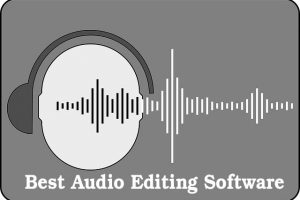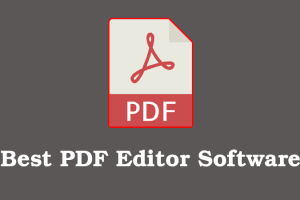
Table of Contents
Need salesforce magento 2 integration company to grow your business? PowerSync will explain the benefits in detail in this article.
The first thing a customer sees when placing an order is a standard guest verification screen, where he is prompted to enter his email address. If it matches an existing customer’s address, he can place an order more quickly using previously saved information. Guests are prompted to create an account with a single click on the checkout page:
- 29% faster for registered users;
- For verified guests, the speed increase is even more noticeable: 38% faster.
- Magento 2 now allows you to add videos from YouTube and Vimeo to product descriptions. Thanks to this feature, you can increase your sales up to 30%. Checkout process Viewable content change
Admin backend
Supports simultaneous management of products and orders by multiple users (up to 25 administrators) who are logged in and are updating products or processing orders simultaneously.
The admin dashboard can be customized for quick access to all important business information.
The dashboard is now touchscreen-friendly, so you can manage your online store on the go.
Thematic CSS3 and HTML5 standards, LESS support, replacement of JS Prototype by jQuery are the main changes related to front-end design.
Speed of layout and ease of making changes
Magento 2.3.2 e-commerce store pages load in 1-2 seconds and non-cached pages load in 5-10 seconds. In addition, Magento 2.3.2 supports Varnish Cache from the very first release, which reduces the load on the server by several tens or even hundreds of times. Full page caching
Multi-warehouses are part of the box, which is especially useful for those with many warehouses and more than one fulfillment operator.
Speed of layout and ease of making changes
Benefits of Magento development
Increased website performance.
Implement new SEO, marketing and other features that increase conversions and profits.
Get multistocks, asynchronous API and Elasticsearch ready to go.
Simplify your TDD work.
Steps to migrate to Magento
- Creating a migration plan
- Writing the terms of reference.
- Time frame of the stage: 2-3 weeks.
- Preparation of test environment
- Time frame of the stage: 2-3 business days.
- Installing modules and developing specific functionality
- Time frame of the stage: 2-3 weeks.
Data migration
- Time frame of the stage: 2-3 working days.
- Creating a theme for Magento 2
- Stage time frame: 4-8 weeks.
- Publication planning and additional database synchronization
- Stage time frame: 5 working days.
- Publishing a Magento 2-based store on a live server
- Time frame of the stage: 1 business day.
Why Magento?
- A single platform
- The platform combines the power and flexibility to serve different types of businesses and all their needs.
- Differentiated Work
- Differentiated work with customers from different target segments is available.
- Expanded functionality.
- Offer a wider range of business propositions to potential and existing customers.
Internal business processes are optimized, which has a positive impact on operational efficiency (costs are reduced, quality is increased). The brand is on par with the world’s largest B2B distributors. The user experience is now considered one of the best in the industry.
Running an online business is harder than ever. You need to exceed customer expectations and provide a flawless experience if you want them to visit your site again and again.
Whether you’re expanding your online store, looking for new solutions for improvements, or starting a business from scratch, your choice of enterprise e-commerce solution has a significant impact on the profitability and success of your online store. Consequently, you need to find the most reliable and secure platform out of the many alternatives.
The good news is that there are many e-commerce platforms available, each tailored to the type of services you intend to provide. However, the wide range of options available can sometimes be a drawback. Choosing an e-commerce platform can be a very difficult decision.
As an eCommerce company, PowerSync spends a lot of time analyzing and comparing available enterprise eCommerce platforms to help our clients decide the most appropriate eCommerce solution for their online stores.
How to choose an enterprise e-commerce platform
Picking the most appropriate enterprise e-commerce platform is not as easy as it sounds. However, there is good news. Selecting the most appropriate e-commerce platform can be much easier if you have an e-commerce strategy that lays out your business needs. While e-commerce experts and web developers can recommend platforms that meet your requirements and the needs of your business, it’s always best to explore the options yourself.
Functional and non-functional requirements
To choose the most appropriate enterprise e-commerce platform, you need to figure out your functional and non-functional requirements. Clearly defining your requirements is the key to a successful project. Absolutely defined and precise requirements help to reduce financial risks and meet deadlines.
We must distinguish between functional and non-functional requirements. Functional requirements are those that relate to what the system should deliver to users, while non-functional requirements describe how the system will do it. Let me explain this further.
Functional requirements are the functions of the product that software developers must implement so that users can perform their specific tasks. In short, these are the basic functions that a software system must guarantee. Generally, these requirements can be described as the “goal” of the software product being developed.
Functional requirements form the basis of the entire software development process. When a software project is implemented, the functional requirements are usually laid out in a separate document. Some of the most typical functional requirements include new features, bug fixes, and new behavior. Functional requirements will define a function, such as: “The Web application must accept customer orders.”
Non-functional requirements refer to non-functional properties and qualities of the system. They are commonly referred to as “quality attributes” of the system. They are implicit expectations of the product.
Non-functional requirements are an extension of functional requirements. They refer to all other requirements that are not covered by functional requirements. Some of the most typical non-functional requirements include usability, accessibility, security, reliability, efficiency, documentation, response time, performance, availability, scalability, data integrity and storage, and compatibility. For example, the site must be available in multiple languages.
Here’s a list of questions we ask our clients to determine their non-functional requirements:
- Describe your current business model and plans for scaling.
- Describe your target audience.
- Describe your current market and target markets for the next 3-5 years.




